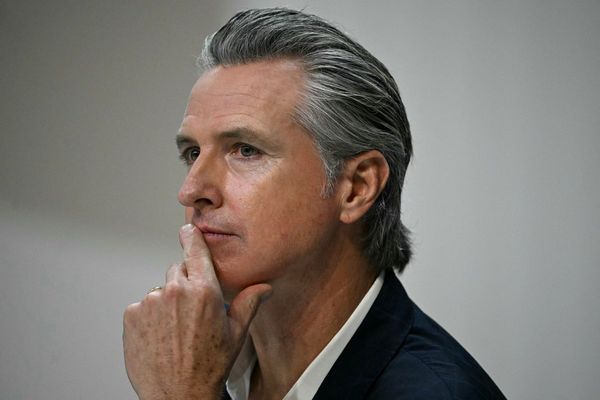
It has blighted many a relationship, but at least one group of snorers has been offered fresh hope this week as researchers announced that taking an epilepsy medication was associated with a marked reduction in sleep apnoea symptoms. What causes snoring? And how can it be tackled?
How many people snore?
Estimates vary but it is a common trait. According to Prof Ram Dhillon, a consultant ear, nose and throat (ENT) surgeon with a special interest in snoring and obstructive sleep apnoea, about 25% of people snore. The British Snoring and Sleep Apnoea Association puts the figure higher, at 41.5% of the UK adult population.
Is all snoring related to sleep apnoea?
No. Dhillon says snoring is caused by the upper airways narrowing, resulting in a turbulent airflow.
If the airways continue to narrow they can become closed and cause obstructive sleep apnoea, a temporary disruption to breathing that lasts more than 10 seconds. Bedfellows of those affected may find that their partner snores for a period, then stops, then suddenly makes a gasping, choking noise.
Dhillon says more than five instances of this in an hour indicate mild sleep apnoea, and more than 30 an hour is classed as severe sleep apnoea.
Dr Sriram Iyer, a consultant respiratory and sleep physician, says: “Most people who have sleep apnoea, if not all, will snore. But that doesn’t mean that all snorers will have sleep apnoea.”
What causes the upper airways to narrow?
Dhillon says it is important to realise the airway is not a rigid structure but has floppy parts. Crucially, muscles that hold the upper airway open relax when we go to sleep, meaning the tubes have a tendency to narrow.
Iyer notes that alcohol makes the throat muscles more relaxed, explaining why many people snore after a few drinks. Lying on one’s back can also increase the chances of snoring thanks to the effect of gravity.
But there are other explanations. Iyer says: “By and large, the most common reason for people snoring is being overweight or being obese,” since weight gain can result in extra tissue around the neck, reducing the diameter of the upper airway.
Genetic factors may also be at play. “Some people will have a lower jaw that’s been pushed back more than usual, or some people will have a larger than usual tongue, or floppy upper airway muscle base,” Iyer says.
Is snoring dangerous?
That depends. Iyer says: “Snoring in itself doesn’t necessarily mean that your sleep is going to be affected or it’s dangerous. It simply indicates that there is vibration.”
But sleep apnoea should be taken seriously. As the NHS notes, without treatment it can lead to problems including heart disease, high blood pressure, increased risk of stroke, and type 2 diabetes.
Why does snoring get worse with age?
“[The] commonest reason, of course, is that we have a tendency to put on weight as we get older,” Iyer says.
There are other reasons. “As we get older, changes occur in the upper airway muscles and airway diameter, as well as how we respond to events in our sleep, which makes older people more susceptible to both sleep disturbances (snoring and sleep apnoea) and their consequences,” he continues.
Iyer says men are more prone to snoring than women, with one reason being that men tend to put on more weight around their neck.
Dhillon says: “We tend to drink more, [are] probably more likely to be overweight, less likely to be looking after our weight and exercising.”
However, Dhillon notes that the prevalence of snoring and sleep apnoea increases in women around menopause – something he suggests is down to hormonal changes affecting muscle tone in the upper airways.
Why do some children snore?
Dhillon says the vast majority of children who snore or have sleep apnoea will have large tonsils and adenoids that can block the upper airway.
Children can grow out of it, and Dhillon notes that it can be treated with surgery. “You can cure them with an adenotonsillectomy in the vast majority of cases,” he says.
How can snoring be treated in adults?
For general snoring and sleep apnoea, losing weight and sleeping on one’s side are among the recommended actions.
To help with the latter, ridged sleeping shirts can deter people from sleeping on their back. “More recently, there was a medical trial involving a band that vibrates and causes you to change your position if you lie on your back,” Iyer says.
Dhillon says the gold-standard treatment for sleep apnoea is a continuous positive airway pressure (Cpap) machine. This involves wearing a mask at night through which air is pumped. “When the airway narrows, the machine senses it and it raises the pressure of the airflow and unblocks you,” he says.
There are other options afoot, including a device that can be implanted into the chest and is connected to the nerve that moves the tongue. If it detects an apnoea event, it stimulates the tongue to move, allowing air to flow in and out of the lungs.
The epilepsy pill may also benefit people with sleep apnoea, although Dhillon stresses that the study was small, it is unclear if the pill reduced outcomes such as cardiovascular and strokes, and its effectiveness must be compared against that of Cpap.
Dhillon says a type of mouthguard known as a mandibular advancement device can help some people with obstructive sleep apnoea, and Iyer says such devices are an effective solution for snoring in general. “With these devices, your lower jaw is actually being pulled forward, and that creates more space at the back of the throat,” Iyer says.
He stresses that it is important to tailor treatments to individuals. “The best treatment for someone is one that they would use,” he says.
What about surgery for adult snorers?
“For a few decades, ENT surgeons have been using a surgery called uvulopalatopharyngoplasty (UPPP),” Iyer says. This involves removing soft tissue around the back of the throat, including the uvula, and shaving the soft palate down.
But this can be very painful and, Iyer says, “it has not been shown to improve the situation in all but the most carefully chosen patients. So it’s not a routine operation that we would recommend.”







